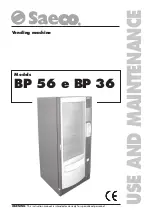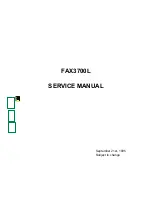
Just in case …
3.18
Digital fax — Unlike analog systems that scan every portion of a document, digital
fax machines survey a document’s overall picture content. Digital fax machines
scan a line and convert the information into a binary code of zeros and ones. The fax
machine takes this information and compresses it, providing high transmission
speeds. Many Muratec units offer proprietary methods for faster transmissions
between Muratec-manufactured units (see also
MSE
,
SMSE
).
DIP
switches — Dual in-line package switch; a two-position on/off switch. Many
Muratec fax machines include
DIP
switches to control optional settings or features.
Effective printing width — The widest image that can be printed on a fax.
Effective scan width — The maximum width the scanner in a fax can scan
during transmission.
F-Code — The
ITU
-
T
has created a fax industry standard for using sub-
addressing/password-based communications with not only Muratec fax machines but
also other manufacturers’ fax machines.
Facsimile (or fax) — A form of communication involving the scanning and decoding
of a document into electrical signals and transmitting of the document, over tele-
phone lines to another device. This device then reconstructs the signals to produce an
exact duplicate of the document. Also, a machine that performs such communica-
tion.
Fallback — Group 3 fax machines operate at the highest transmission speed possi-
ble on a given telephone line. Muratec systems offer automatic fallback; if line
quality drops during transmission, the fax machine will reduce speed to the fastest
possible level.
Fine resolution — 203
H
×
196
V
lpi. Also shown as
G
3
F
(“Group 3 fine”) on some fax
units.
Grayscale — Not a level of resolution, but a method of scanning and transmitting
halftone images. Fax machines with grayscale abilities interpret photographs in
levels of gray between white and black. The transmitting fax machine must have
grayscale ability to send a photographic image accurately, but the receiving
machine does not need it to print the image.
Group 3 — Refers to fax machines that use digital encoding. These units transmit
one page in less than one minute and produce resolution of 203
×
98, 203
×
196, or
203
×
392 lpi.
Halftone — See Grayscale.
Handshaking — An exchange of data between telecommunications and/or
computer equipment that “introduces” two systems to each other. For example,
faxes use a handshaking protocol to identify the
ITU
-
T
group of each unit and to
begin fax communication.
Hub — See Relay broadcasting.
Hz (or Hertz) — A measure of frequency equal to one cycle per second. Used in the
specifications for a fax machine, it identifies the
AC
power the unit requires.
ITU
-
T
— International Telecommunications Union – Telecommunications Sector.
(Formerly known as
CCITT
, for Consultative Committee for International Telegraph
and Telephone.) A telecommunications forum for member countries of the United
Nations, whose Study Group
XIV
established the primary groups for fax equipment,
covering communication protocol and transmission. Muratec Group 3 fax machines
offer the fastest transmissions allowed by the
ITU
-
T
when communicating with other
Group 3 units.
ITU
-
T
Test Document 1 — Also called the Slerexe (“slehr-rehks”) letter; An
ITU
-
T
standard document with a known black density which fax makers often use to test
transmission speeds of their fax machines. Published transmission speeds are also
based on this document.
ITU
-
T V
.29 and
V
.27 ter. — A standard set of communication procedures allowing
fax machines to talk to all other units adhering to those standards.
Laser printing — A plain-paper printing system. Toner is attached to a charged
drum and an image is transferred onto plain paper through electrical currents, then
fused with heat and pressure to produce a dry, permanent printout.
LCD
— Liquid crystal display. Used on some Muratec units for status displays.
Leased line — See Private line.
Load number — A number assigned to telecommunications equipment used in
Canada; designed to help prevent overloading on a telephone circuit. See also
Ringer equivalence number.
Location
ID
— See Station
ID
.
lpi — Lines per inch. The way fax image resolution is measured. (For example, see
Normal resolution.)
MH
— Modified Huffman, the standard
ITU
-
T
Group 3 data compression method. A
one-dimensional coding scheme that compresses data in a horizontal direction only.
A feature of all Muratec fax machines,
MH
assures transmissions faster than one
page per minute when communicating with other Group 3 units, regardless of man-
ufacturer. See also
MR
,
MMR
,
MSE
,
SMSE
.
Modem — Modulator-demodulator. A device that converts digital data, like infor-
mation from a fax machine, into an analog signal for transmission over ordinary
telephone lines. A modem is included in a fax machine and allows it to be connected
directly to a
PSTN
telephone line.
MR
— Modified Read, an
ITU
-
T
Group 3 standard data compression method. A two-
dimensional coding scheme that compresses data in both horizontal and vertical
directions and allows for faster transmission when communicating with other
Group 3 units, regardless of manufacturer. See also
MH
,
MMR
,
MSE
,
SMSE
.
MMR
— Modified Modified Read, an
ITU
-
T
Group 3 standard data compression
method. A two-dimensional coding scheme that compresses data in both horizontal
and vertical directions and allows for faster transmission when communcating with
other Group 3 units, regardless of manufacturer. See also
MH
,
MR
,
MSE
,
SMSE
.
Summary of Contents for F-98
Page 1: ...Operating Instructions For Muratec s F 98 plain paper fax machines ...
Page 3: ...Welcome ...
Page 8: ...Getting started A quick and friendly trip through the basics of your Muratec fax machine ...
Page 28: ...Beyond the basics We ve covered the musts Now let s explore the goodies ...
Page 100: ...Just in case 3 21 This page intentionally blank ...
Page 101: ...Appendix and index ...













































